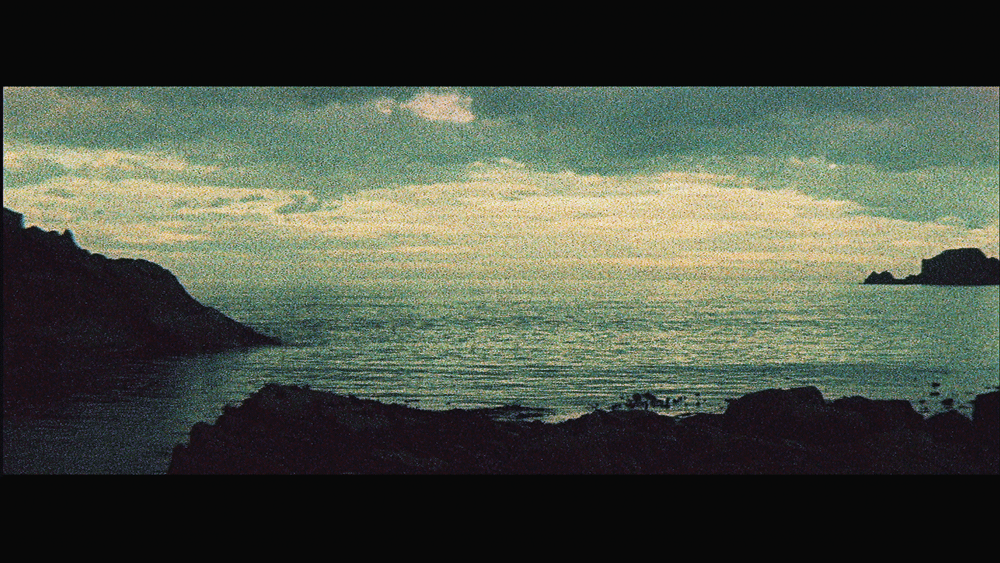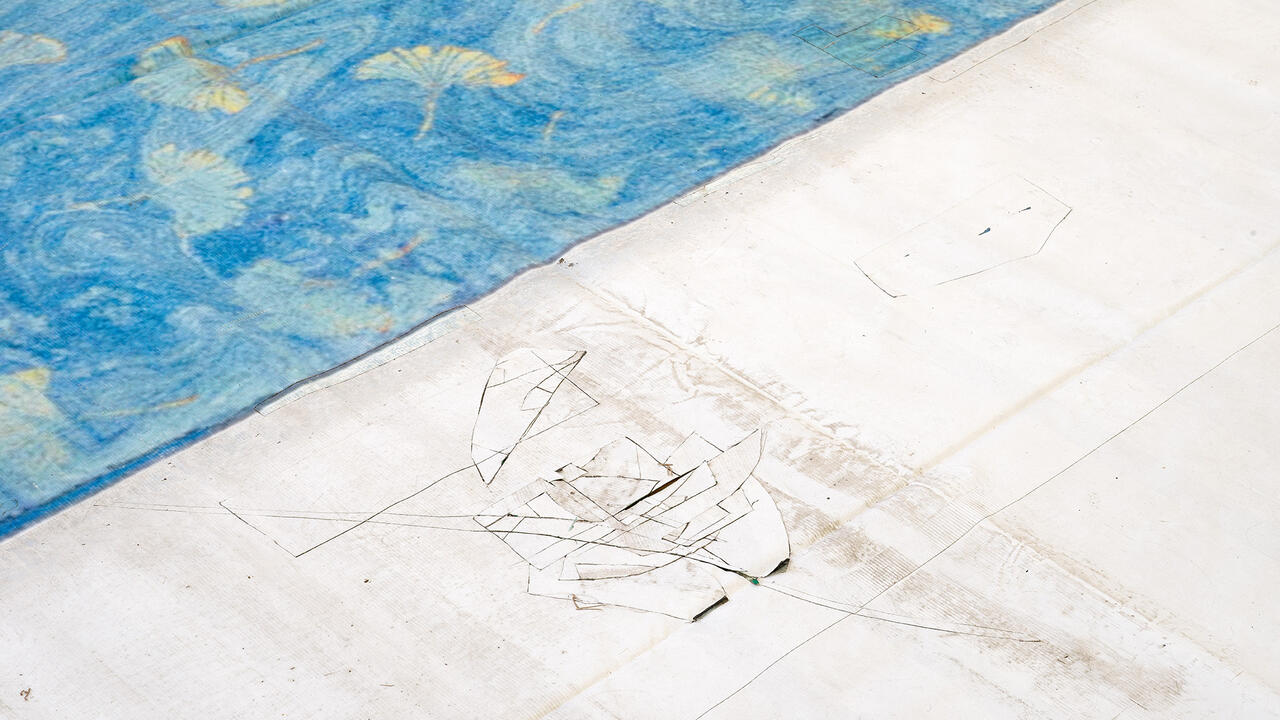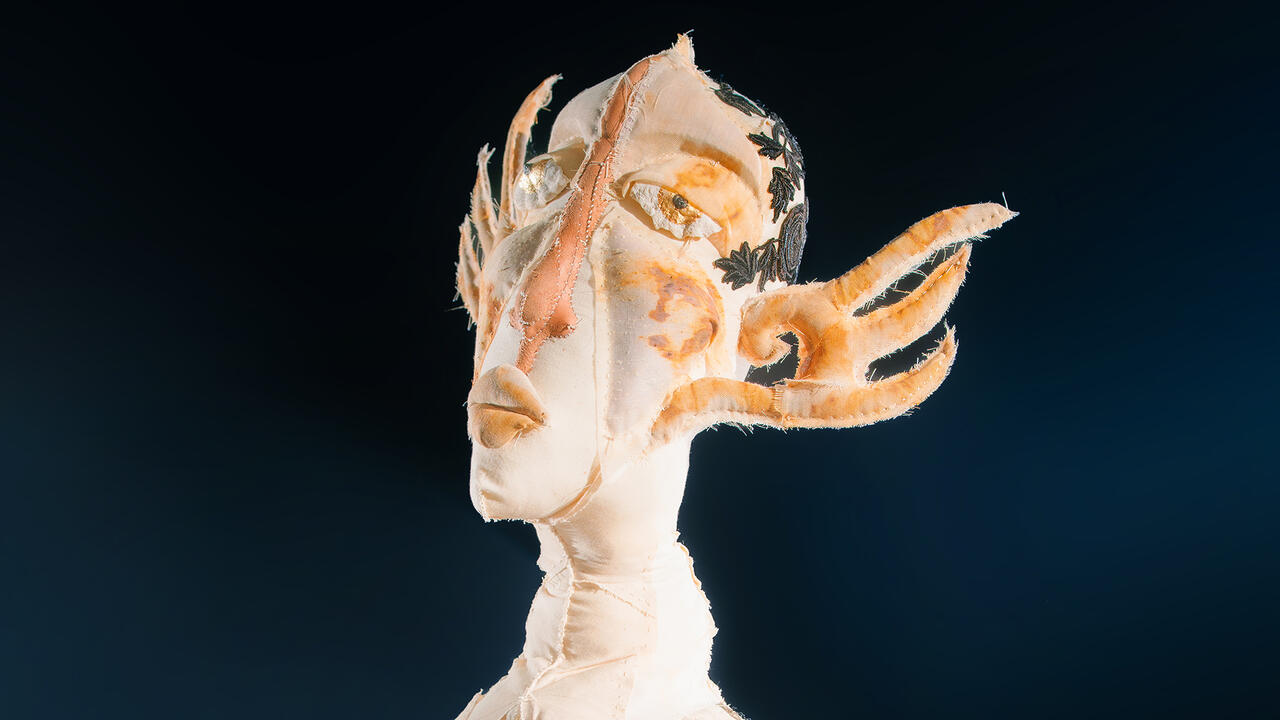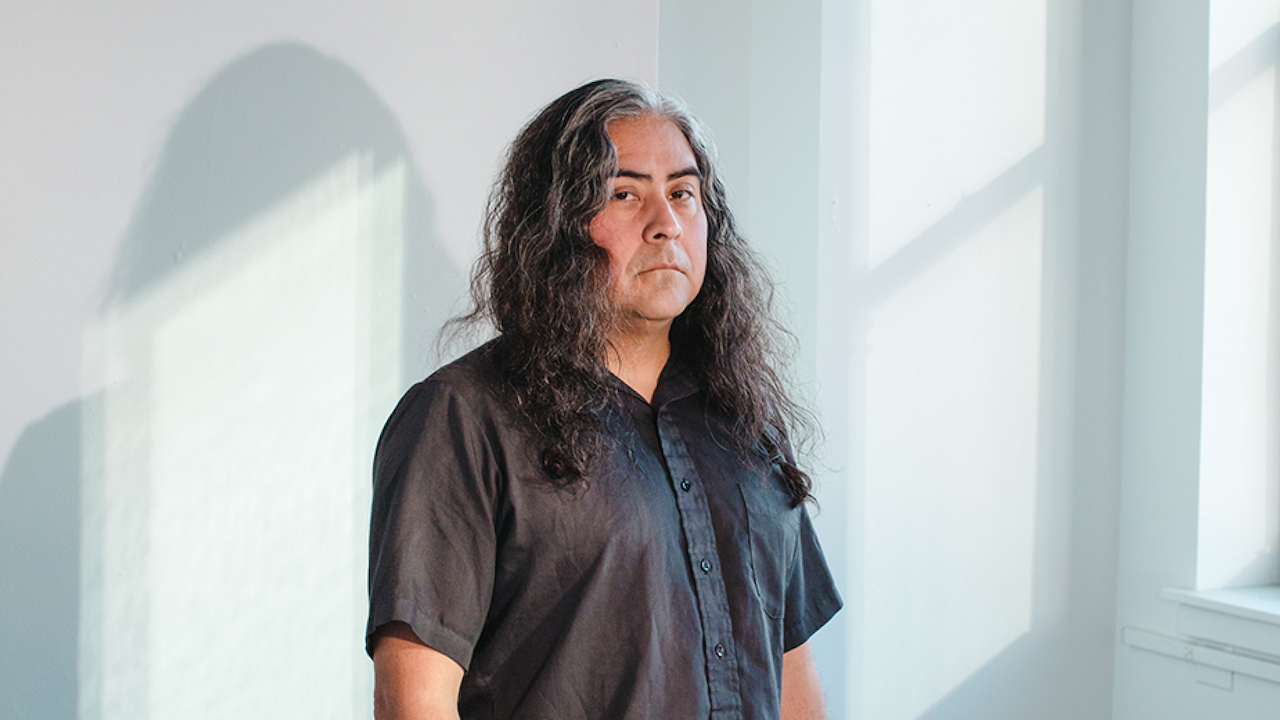Somerset or, A Glance at the Deep Future of the Avant-Garde
A short story with images from Ben Rivers’ film Slow Action (2010)
A short story with images from Ben Rivers’ film Slow Action (2010)

Somerset is the common name for the largest island at the Westward reaches of that interesting ‘Proliferation of Islands’ that arose after the Fourth Great Flood Epoch did away with the continents, 18 millennia after the departure of the Laurii to the stars, 13 before their return. It extends from 51 minutes, two seconds to three minutes, one second West by Quinnian’s Compass.
Encircled by the OmniOcean of the Mareassic Era for dozens of millennia, the island is out of rumoured reach of other local civilizations. Somerset measures roughly 274 kilometres on its East–West Axis. Its coastline is over 1,000 kilometres along the Northwest, extending along and around the 32 so-called promontories, which are the island’s distinguishing geographical feature. Systems of measurement, however, like most features of the local culture, are continually in flux. The total surface area rarely grows to more than 4,000 kilometres.
The island’s central geological feature is the great Somerset Volcano. The enormous severed cone and its slopes cover nearly a third of Somerset’s overall area. The crater’s basin contains numerous springs, rich arable land, tropical fruit, grapes and other luxuries. On the rare occasions when the political situation admits to the tending of farms, all is easily and naturally abundant. Down the volcano’s slopes in all directions distend consolidated lava flows, eventually separating into 32 promontories like rigid tentacles from the husk of a squid – usually bulbing at their ends into highland ranges of considerable height, dipping at last into virid valleys, finally meeting the ocean with impregnable cliffs. The long slopes between promontories and cone are rocky and unsuitable for habitation, but they are rich with oolites, alabasters, iron and other metals. The papyrus palm, as everywhere else outside the Basin, is the dominant vegetative species.

Historically, Somerset is distinguished by its fervent political culture. It is a civilization that can be said to exist always in a state of immanent, occurring or just-suppressed political revolution. It is called Somerset by default, usually going under other names, so zealous are its politicians. During Grugg’s lifetime it was renamed New Fermanagh, Gheth and Fanner’s Freehold. ‘Somerset or Quark,’ Grugg writes, ‘all’s one to me.’
Somerset is divided territorially into one federal province, the Somerset Basin, and 32 promontories: Ballyhister, Van Hoe, Cavan, Comsaten, Pretoria, Glastonbury Tor, Fermang, Stillburn, Kan, Hoplite, Casamassima, Zeed, Frilm, Leeth, Loth, Velmen’s Land, Crenoah, Milton, Detriot, Waxford, Wubble, Gullsneck, Pillow, Rodon, Slanland, Clearport, Kent, Gelo, Trahan, Ironville, Ukridge and Waterland.
Legend has it that four rafts, residue of four separate catastrophes in four great storms, washed up on four of the promontories on the same day. On each raft there was a human baby and a single book. At the time of Grugg these were thought to be Leon Trotsky’s The Permanent Revolution (1931), Jean-Jacques Rousseau’s Confessions (1782), Mary Wollstonecraft’s Vindication of the Rights of Woman (1792) and Zitsko’s No Frontier (now lost to Somerset). Every promontory believes itself at one time or another descended from one of the four babies. This occasions interesting cross-island communication and secret traditional alliance between clades (the customary designation for an inherited social grouping).
On Somerset, if large amounts of labourers are committed to difficult work, a large population can boom. Farmers, Quarryfolk, Fisherwomen, Builders and Merchants wield great power when effectively organized. There is not enough wood to make fire a danger and the alabaster towns can withstand frequent sackings. Census, considering the caverns, is nearly impossible, and always a great controversy.

The unpredictability of weather in the higher reaches of the Promontory Mounts forces a squat hardiness as the overriding characteristic of all its human inhabitants. The sublimity of the views and the reaches of the heights throughout the island promote high romanticism; the ins-and-outs of the capital occasion enlightened scepticism. Each town is a centre of local organization and turmoil. Survival depends on networks of alliance to Basin City and to each of the other Promontories. News can travel quickly via tower signals when a single power-grouping is in control of a network – at other times, for centuries even, according to Grugg, this system will have evolved into code so complicated its deciphering takes longer than a man might on foot to deliver a note.
At times of boom, political strife keeps the population maintainable. At the age of 44 all men and women are expected to run axe-in-hand to battle and sacrifice their lives for a dream. They are sometimes hard to persuade. They may live for years after, even rise to power – but in battle the elderly are the only ones who risk their lives. To young people fall the duties of day-to-day administration, politics and power. Un-jaded by experience, they are ever rash, guided by flair, sexuality, ambition and courage. They are only young once. Every citizen, at all times, has it in his or her grasp to ride a wave of fortune from any of the various clades into the Basin City Octagon.
Life in the Capital is topsy-turvy to say the least, but Basin City’s residents and workers are among the proudest on the Island, constituting the largest single clade. Here high and low cultures intertwine deeply in all levels of society. Mica deposits abound on the rocky portions of the island but there is not a pane of glass in the city proper, so apt in the continual upheaval is it to be smashed. The Centre of Power, the Rat House or Octagon, is a fortress. The great avenues to and fro, lined with various statues and commemorations in the latest styles, invite both protest and easy massacre. There are numerous parks in the basin. The revolutionary principle extends into Somerset’s visual arts and music. Primitivism and complexity are the twin engines of an astonishingly profuse and symbolic culture. Painting is always public. Theatre is indistinguishable from politics and constantly incendiary. In textiles and craft code and flag combine into ever-more beautiful and stirring combinations of tradition and colour. Song is narrative, sentimental, simple and potent. Monkeygut bows and bladder pipes always signal the coming of war. Carved monuments are temporary, of the moment, extraordinarily moving, and often made up of ironic recombinations of ruins. The centre of a clade block in Basin City will be rich with pageantry and historical celebration. Science is deemed the finest art and architecture the most corrupt. Manual labour is considered righteous and it is with pride that most islanders work to support their clade. Education consists of reading and unceasing virulent debate. Trade between promontories is a necessity and all varieties of economy appear from time to time though the amassing of individual wealth is always considered reactionary and foolish.

Religion rarely flares on Somerset, except when it arrives via castaway or hoax, and then it is always quickly extinguished. Dictators, Kings and Bards are from time to time worshipped, but always relentlessly satirized. Strong papyrus whiskey is the favourite narcotic, but the old salvia plant appears from time to time around the sewer caverns. Other fungi and growths enjoy sporadic popularity. Old soldiers prize mushrooms for battle.
In periods following a population boom war is full of slaughter and glory; spectacular infantry battles are recorded in all their intricacy. More often, conflict is carried on by competitions of sport, rugged survival and bitter terrorism. A lack of sulphur limits munitions. In many engagements only one or two deaths are reported, or feigned afterwards. In any event, after large fights survivors eat the slain in large banquets and celebrations.
Somerset-wide, excepting the octopus, only literature holds the authority of Totem or Taboo. Not only the surviving works of First Earth, from Homer to Winnegutt, but Somerset’s own voluminous literature is preserved at all times. The writings of yesterday, their truths, lies, beliefs and entertainments, are kept in order in the great caverns below Basin City. Rolled papyrus is encased in iron tubes and maintained by a priesthood of librarians, made up of an arbitrary selection of the left-handed people on the island. Immune to political strife, they run second-hand bookshops in all the major towns and throughout Basin City. Their premises afford shelter, one night’s safety and a meal for those who want to read in peace. Though little is known about their ways, Grugg intimates that this clade and the honour done it constitutes the principle of Utopia within a Utopia that so interests the current Curator.
Since there is little permanent security to be gained by adding to the veritable OmniOcean of text, writers live a hard life. This improves their work. In Basin City scribblers are offered board, whiskey and other narcotics by printer clades and ambitious taverns. Verse is doggerel and slanderous. Essays and philosophy compete with memoir and revisionary history as the most popular non-fictional genres. Vis-à-vis imaginative writing and science fiction – being transformative yet able to avoid interested censors is the norm. A librarian has a network to the Library in Basin Citadel, and can have any work not currently censored available within 24 hours of request. Scribes work quickly and each papyrus comes in a compact self-rolling tube, with mirror viewer to help with the left-hand script. Island-wide, literacy is 100 percent. Newspapers and papyrus screeds are just plenty enough, so says Grugg (a Basin Citadel satirist during the so-called One Hundred Inken Days) to burn one through a mild winter.

It is one of the paradoxes wound into the idea of Utopia, or so Grugg argues, that it must fulfil simultaneously the ideal for the state and the individual. Usually, the former necessity proves its undoing. ‘On Somerset, one man’s chopping-block is another man’s guillotine,’ writes Grugg. ‘My vision of a properly functioning society and my own role in it may not accord with yours – especially if your clades hail from different alliances than mine. But how splendid if they do accord! Across clades! Tasting change on the air! If brothers, sisters and citizens find one another amid the chaos of history and make a stand together, the state they found will spontaneously develop around them and for that moment the whole world transforms theirs to own, to hold, to define anew. Then, axe in the air, the blood of a bureaucrat still fresh splattered on my cheek, I am fully strong, fully mature, fully free: a veritable god!’
No Utopia is a prison. So it is that from time to time older individuals build rudimentary vessels with papyrus bark and skin and sail away never to be seen again. No one hinders them. Each is allowed to take one book, encased in a special waterproof floating tube.
Somerset-born Ben Rivers lives and works in London. He has had recent shows at Matt’s Gallery, London, Hayward Project Space, London, and was this year’s winner of the Baloise Art Prize, with his film Sack Barrow (2011), at Art 42 Basel. He will have a solo exhibition at the Hepworth Wakefield in 2012.
1. The New Earth Encyclopaedia of Preserved Utopias, edition unlimited






















